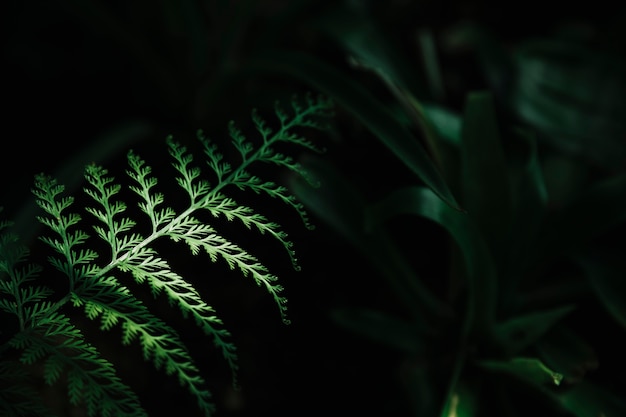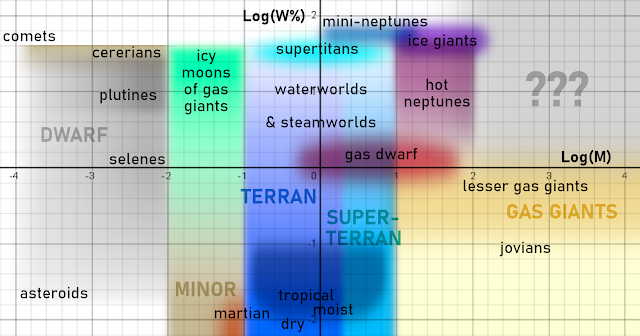PAART'S AUTUMNAL COLORS
VOTING RESULTS
Winning 2 to 1, for dominant plant color of Paart is...... Pastel Red, well, sorta, theory is beautiful, about it's feasibility - it gets complicated.
The starting conditions (early Cambrian) of Paartian soil is a pH 4,79 (wet soil), or similar to that of coffee left over to sit for 24h - places where the rain is minimum, ie, further inland of Sthalika, the acidity could be as low as pH 6,69 - equivalent to that of milk or Earth normal rainwater.
One way to do make reddish plants would be to use carotenoids such as β-carotene, licopen or lutein, or even use the low soil pH and give them red anthocyanin.
VIABILITY
On Earth, green algae wouldn't appear until ~1Gya, and red algae been around for at least 1,5Gya, however carotenoid biosynthesis wouldn't appear until ~580Mya (split between cilliates and diatoms), red anthocyanins until 450Mya.
So far, seems inevitable we would first have blue-green algae - but, while on Earth in it's analogue stages to where Paart is now, the oxygen levels were rising just above 10%, on Paart the oxygen levels have been decreasing from 14% to 10% in the last 310My, which means that the ozone layer of Paart during this period would have been in such high levels it would take another 200My for Earth to reach into the Devonian period.
One great limiting factor for life on land have been the amount of UV radiation incidence, with a thick ozone layer by 450~400Mya, mosses and land plants could finally arise make their way into the barren continents.
SOLUTIONS
Paart has already a great advantage compared to Earth, being so much far away from a low-mass star with a not so intense UV output, and receiving relatively little light - a thick ozone layer seems like the cherry in the cake, the bright lamp in a room full of moths - begging for an early plant-life explosion, short, but early explosion, at least, enough algae biodiversity that could have armed paartene life with the right chemicals for anthocyanin production.
Anthocyanin acts as plant sunscreen, regulating UV stress, the declining levels of oxygen after this small algal bloom would select ones that could produce anthocyanin more efficiently to deal with increasing UV radiation - mosses and terrestrial algae could have appeared as soon as 3950PMA.
MEET, THE CHRYSOPHYLL
Apart from early Earth plant-life, which would have a hard time trying to find magnesium in such acidic soils for the making of chlorophyll b, but would have no problem in finding iron, cobalt, copper or zinc - curiously enough, zinc and copper porphyrins are more efficient than conventional magnesium ones used by plants.
Zinc Protoporphyrin (ZPP) can be found in the bloodstream when by some reason the production of heme is inhibited (lead poisoning) or the body has a lack of iron - plants also could use ZPP as an anti-cancer agent in their body structure to deal with increased UV radiation.
Zinc Porphyrin 8 has a power conversion efficiency of 7,13%, with a major absorption line at ~425nm, 560nm and 610nm - magnesium porphyrin efficiency is around 5,73% - in practice Chlorophyll's efficiency is about 4%, I couldn't find papers on nature's use of Zn(II)P8, but on the same scale of fallibility, about ~4,98% efficiency, or +24,4% as efficient - such an efficiency boost would yield the same as using conventional chlorophyll a under 85% Earth's sunlight - instead of Paart's dull 68% Earth sunlight incidence.
On the other hand, by adding zinc acetate to porphyrin a in acidic medium, you are able to make zinc-chlorophyll, at room temperature (about 25°C), said to have similar potential as magnesium-chlorophyll - similar processes can be made to tweak bacteriochlorophyll to work with a zinc center metal.
Zn-Chl-1 has a strong absorption at 720nm, and slightly less at 420nm, mostly reflecting yellow-green light, but making far better use of these wavelengths than chlorophyll a (noticeable when comparing quantum efficiency yield), having an efficiency of 11,44% - turned down by the same previous fallibility value, maybe around ~8,0% efficiency, or +40% as efficient.
With relatively acid oceans (pH 6,6~7,0) Paart's zinc is mostly abundant in the form of ionic Zn+2 (~60%), and then in the form of citrates, phosphates and sulfates - in that scenario, despite being 40x less abundant than magnesium, it could have proportioned a great advantage over chlorophyll users - one example of this rare but efficient is vitamin B12, using cobalt which is 3x rarer than zinc in Earth's crust and is essential to DNA protection.
I will dub this form of photosynthetic pigment, which reflects yellow and red, Chrysophyll (Chy), or "golden-leaf" pigment.
When land plants appear, we would have a variety of yellow-orange mosses depending on their content of anthocyanin, purple and blue plants may appear the further away from acidic soil, and green plants may be a rarity, or, reduced to low-lying plants such as grassland and shrubland even in equatorial areas, whereas reddish plants occupy the dense forest spaces.
THE COLORS WE COULD HAVE
Honestly, I have to admit that I made the palettes before exploring the actual photosynthetic chemistry that's viable on the planet, so my original options doesn't include any of that material.
I made an additional table for those extra 2 options that seem to be more viable than conventional chlorophyll.
I mapped out the distribution of acidity in soil colored by anthocyanin response to it, for the early Cambrian maps of Paart.
By the Paleocambrian period, 62,97% of the land area is neutral, 13% of the land have a pH around 6, 9,12% around pH 5, and 10,4% with pH of about 4,5.
In turn what this all mean, is that about 1/3rd of the land favors red/purple pigments, while the rest favors blue plants - what would not have happened if Paart's continents where smaller and tropical, what would have avoided a large neutral area to be protected by the polar cap.
OZONE LAYER AND ANTHOCYANIN RESPONSE
2,8% of the volar spectrum is UV radiation, on Earth the UV part of the solar spectrum is about 3,2%. Paart has proportionally half as much oxygen than Earth, but actually 2,52x more of the gas, being of very similar size to Earth, we can ignore distribution differences for now - Earth has an ozone layer that's ≤10ppm in ozone (surface levels are 0,3ppm).
Ozone
is created when UV dissociates an Oxygen molecule, the subsequent
reaction creates Ozone which absorbs UV light and dissociate as result.
Using the graphs 1 and 2, we are assuming a healthy ozone layer as ~300 Dobson Units thick.
Paart receives only 87,5% as much UV as Earth, and does have lower oxygen proportions than Earth's atmosphere, the total Ozone that would be naturally occurring is about 4,76ppm, or a layer that's about ~124,9DU thick (similar to ozone layer thickness above Antarctica in 2008), the global UV radiation levels would be ~1,2x that of UV with 300DU - weighted UVI for an Earth clear-sky is about 10,6, while a Paart clear-sky UVI is 11,1. With wet soil reflecting about 20% of UV light, the effective UVI for someone on the surface of the planet on a clear day is about 13,32, and 10,6 when it's cloudy.
Anthocyanin in plants increase with UV intensity, this may yield in some minor size/mass-losses in comparison with plants under lower UV levels (at least, with Earth-plants).
Exposure to UVI for UVB of 12,0 showed to increase Anthocyanin levels ~4x in certain plants, and exposures mixed with blue-light and UVB mixed (UVI ≤1,8), increases of 6~7x - gene expression for mixed UVB/Blue light are 400~5000x stronger. Wit,h our 330mW/m² UV incidence, we should expect the anthocyanin gene expressions to be at least 100~500x stronger with UVB/Blue light of 475 mW/m², in what case including blue light the exposure index is about 19,0.
Assume the "normal" anthocyanin expression is about 32ug/g of the fresh-weight (100th of the levels in peppers), if our expressions are around 200~250x times that, we should expect plants with 8mg/g of fresh-weight, or 1,3x more anthocyanin than in some grape peels, with the maximum expressions about 16mg/g, nearly as much as in black grapes (20mg/g).
Referent to color expressions, while my initial guesses where based on the argument that soil pH would directly influence plant anthocyanin color expression - it seems that the presence of aluminum and iron in the soil helps to stabilize the color expression, aluminum blue-shifts the anthocyanin expression while iron does red-shift it. Anthocyanin has also shown to turn yellow-ish when the plant pH is alkaline.
On Paart aluminum and iron are in identical levels and relatively low abundance when compared to Earth. However, iron is more resilient to acidity changes, inside the paartene soil pH range - the aluminum should be between 2,5ppm and non existent, whereas there could be about 75~100mg/Kg of iron in the soil depending if the soil is more acidic or near-neutral, respectively.
So, actually, the more neutral the soil gets - the purpler the plant, in some cases where the soil happens to be basic, there would be a variety of, yellow/green/blue plants depending on how basic and on iron deposit levels, whereas on neutral and acid soils, plants would be magenta towards the red, respectively.
THE TRUE COLORS OF PAART
Finally, after all this research, we get a color field that looks like this:
And then we get, 44% magenta plants, 27% red plants, 27% yellow plants, within variety, green and blue plants may appear where there is yellow plants. If we cluster colors together, 3/4 of plant-life are some tone of magenta/red - the average color of this distribution, ie, the color that would mainly apparent from space, is very close to Pantone 2342 C (HEX b65a65), that's Paart's official plant color from space, among other autumnal colors.
Paleocambrian Paart IF it was fully covered by plant life
Paartene plants would still be classified as photo-litho-autotrophs - but a rather special type, one that is very tolerant to UV radiation, and has learned to thrive without the magnesium and aluminum abundance Earth has - they are, the Ensarkophytes (meat-colored plants).
WHAT IF IT WASN'T RED?
Having in mind everything we've done, seems there wasn't any way we could have blue to start with, how would it go for blue/cyan plants?
If we had to use blue, we would use early algal phycocyanin with a zinc center and manganese ions to make the plant material basic enough to bump the anthocyanin towards blue - as mechanism of defense against the acidity, over time, as the soil incorporated these basic substances, the plants could resort to calcium ions as an evolutionary leap in combating acidity in internal fluids, they would still appear green and yellow depending on the iron content and anthocyanin expression - that's in a very, very summarized way of saying it.





















